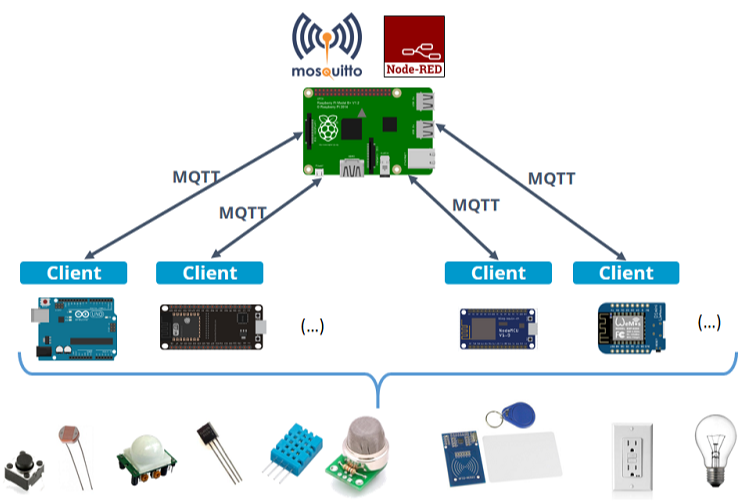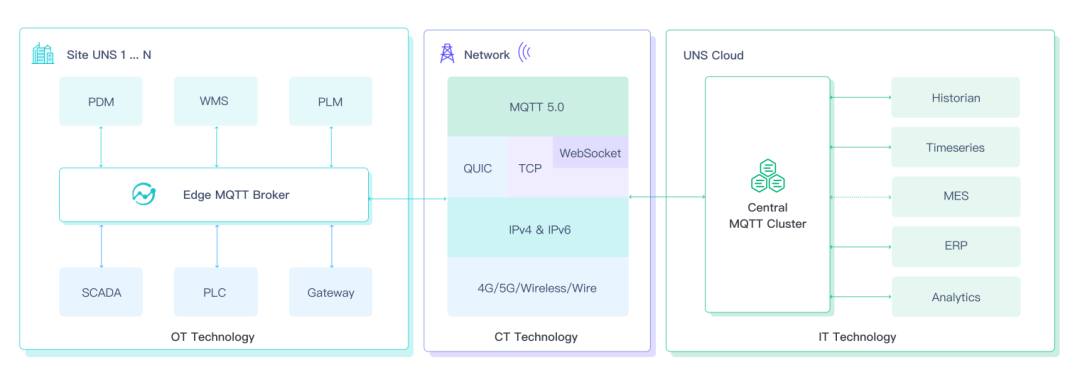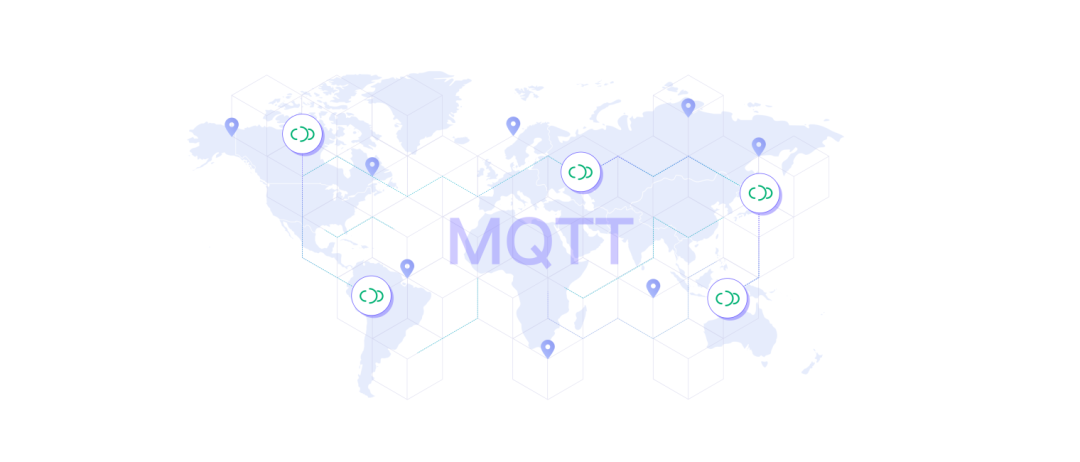Skip to content
MQTT is the standard protocol for message transmission in the Internet of Things (IoT), utilizing an extremely lightweight publish-subscribe messaging model to connect IoT devices in a scalable, reliable, and efficient manner.
Since IBM released MQTT in 1999, over twenty years have passed, and it has been a decade since EMQ released the open-source MQTT message server EMQX on GitHub in 2012. Today, in the rapidly advancing technological landscape of 2023, as the scale of MQTT usage in IoT continues to grow and scenarios become more diverse, we can anticipate the following seven development trends in the field of MQTT technology.

QUIC (Quick UDP Internet Connections) is a new transport protocol developed by Google, running on top of UDP, designed to reduce the latency of establishing new connections, improve data transfer rates, and address some limitations of TCP.
The next-generation internet protocol HTTP/3 uses QUIC as its underlying transport protocol, providing network applications with lower latency and better loading experiences compared to HTTP/2.
MQTT over QUIC is the most innovative advancement in the MQTT protocol since the release of the MQTT 5.0 specification in 2017. With advantages such as multiplexing, faster connection establishment, and migration, it has the potential to become the next standard for MQTT protocols.
MQTT 5.0 defines three transport types: TCP, TLS, and WebSocket. In IoT security best practices, MQTT over TLS/SSL is widely used in production environments to secure communication between clients and brokers. However, it is slow and has high latency, requiring 3.5 RTTs, which includes 3 TCP handshakes and 4 TLS handshakes to establish a new MQTT connection.
Compared to MQTT over TLS/SSL, MQTT over QUIC is faster and has lower latency, requiring only 1 RTT for initial connection establishment, and can leverage 0 RTT connection recovery features to accelerate reconnections. The QUIC protocol stack can be customized for various use cases, such as in unstable network environments or scenarios requiring lower latency communication from client to server. It can play a crucial role in scenarios like the Internet of Vehicles (IoV) under mobile networks and industrial IoT (IIoT) scenarios that demand extremely low latency, effectively enhancing the user experience.
The rise of the Serverless model in cloud computing marks a groundbreaking paradigm shift in how applications are designed, developed, deployed, and operated. In this model, developers can focus on the business logic of the application without managing infrastructure, thereby enhancing agility, scalability, and cost-effectiveness.
The Serverless MQTT message server will be a cutting-edge architectural innovation in 2023. Traditional IoT applications may take minutes or even hours to deploy MQTT message services in the cloud or in private enterprise environments, whereas Serverless MQTT can quickly deploy MQTT services with just a few clicks.
In addition to rapid deployment speed, the greater value of Serverless MQTT lies in its unparalleled flexibility: seamless scaling of resources according to user demands, along with a pay-as-you-go pricing model that matches this elastic architecture. Serverless MQTT is expected to drive broader applications of MQTT, reduce operational costs, and stimulate innovative collaboration across various industries. We may even see every IoT and IIoT developer having access to a free Serverless MQTT message server.
MQTT Multi-Tenant Architecture
Multi-tenant architecture is an important foundation for implementing Serverless MQTT services. IoT devices from different users or tenants can connect to the same large-scale MQTT cluster while keeping their data and business logic isolated from other tenants.
Multi-tenant architecture is common in SaaS applications, where a single application serves multiple customers or tenants. There are typically two different implementation methods:
-
Tenant isolation: Providing each tenant with a separate application instance running on a server or virtual machine.
-
Database isolation: Multiple tenants share a single application instance, but each tenant has its own database schema to ensure data isolation.
In the multi-tenant architecture of MQTT Brokers, each device and tenant has a separate, isolated namespace, including a unique topic prefix and access control list (ACL) that defines which topics users can publish or subscribe to.
The multi-tenant MQTT message server can reduce management overhead and flexibly support complex scenarios or large-scale IoT application scenarios. For example, departments and applications within a large organization can use the same MQTT cluster as different tenants.
MQTT Sparkplug is an open standard specification designed by the Eclipse Foundation, with its latest version being MQTT Sparkplug 3.0, which defines a unified data access specification for industrial devices, enabling the connection of various industrial sensors, actuators, programmable logic controllers (PLCs), and gateways through the MQTT protocol.
MQTT Sparkplug 3.0 was released in November 2022 and includes the following key new features and improvements:
-
Support for MQTT 5.0: Added support for MQTT 5.0, including new features such as shared subscriptions, message expiration, and traffic control.
-
Optimized data transmission: Data transmission has been optimized using more compact data encoding and compression algorithms.
-
Extended data model: An extended data model has been introduced that allows for more detailed communication of device information, as well as support for the transmission of configuration data and device metadata.
-
Higher security: Several improvements to security, such as support for mutual TLS authentication and optimized access control mechanisms.
-
Simplified device management: Includes automatic device registration and discovery, simplified device configuration, and improved diagnostics.
MQTT Sparkplug aims to simplify the connection and communication between different industrial devices, enabling efficient industrial data collection, processing, and analysis. With the release of the new version, MQTT Sparkplug 3.0 is expected to see wider application in the industrial IoT field.
The Unified Namespace is a solution architecture built on an MQTT Broker oriented towards industrial IoT and Industry 4.0. It provides a unified namespace for MQTT topics and a centralized repository for messages and structured data.
The Unified Namespace uses a central MQTT Broker to connect industrial devices, sensors, and applications, such as SCADA, MES, and ERP, in a star topology. The Unified Namespace greatly simplifies the development of industrial IoT applications with an event-driven architecture.
In traditional industrial IoT systems, OT and IT systems are usually separate, with their data, protocols, and tools operating independently. By adopting a Unified Namespace, OT and IT systems can exchange data more effectively, ultimately achieving the unification of OT and IT in the IoT era.
Today, through EMQ’s open-source MQTT message servers EMQX or NanoMQ, combined with the industrial protocol gateway software Neuron, users can build a Unified Namespace architecture supported by the most advanced technologies in the IT sector.
MQTT Geo-Distribution is an innovative architecture that allows MQTT Brokers deployed in different regions or clouds to work together as a single cluster. Through Geo-Distribution, MQTT messages can be automatically synchronized and transmitted between MQTT Brokers in different regions.
There are two methods to achieve MQTT Geo-Distribution:
-
Single cluster, multi-region: A single MQTT cluster with each node running in different regions.
-
Multi-cluster, multi-cloud: Multiple MQTT clusters distributed across different clouds connected together.
We can combine these two methods to create a reliable IoT data infrastructure between MQTT Brokers deployed across regions. Through MQTT Geo-Distribution, enterprises can establish a global MQTT access network across multiple clouds. Regardless of physical location, devices and applications can communicate with each other through the nearest node.
MQTT Streams is a highly anticipated extension capability of the MQTT protocol, enabling real-time processing of massive, high-frequency data streams within the MQTT Broker. This further enhances the capabilities of traditional MQTT Brokers based on the publish-subscribe messaging model. With MQTT Streams, clients can produce and consume MQTT messages in a streaming manner similar to Apache Kafka, allowing for historical message replay. This is particularly important for event-driven processing, ensuring eventual data consistency, auditability, and compliance.
Stream processing is crucial for real-time mining of business value from the vast amounts of data generated by IoT devices. Previously, this process was achieved through an outdated and complex big data stack, requiring integration between MQTT Brokers and Kafka, Hadoop, Flink, or Spark.
With built-in stream processing, MQTT Streams simplifies the IoT data processing architecture, improves data processing efficiency and response time, and provides a unified messaging and stream processing platform for IoT. Through features such as message deduplication, message replay, and message expiration, MQTT Streams achieves high throughput, low latency, and fault tolerance, making it a powerful tool for real-time data stream processing in MQTT-based IoT applications.
In summary, these seven technical trends of MQTT reflect the advancements of emerging technologies and their significant role in driving the development of the IoT.
As a standard message transmission protocol that has evolved for over twenty years, the importance of MQTT continues to grow. As IoT becomes increasingly widespread across various industries, the MQTT protocol is also evolving to meet new challenges, catering to the demand for lower latency connections, more convenient MQTT service deployment, flexible management in complex scenarios or large-scale IoT applications, and access to industrial devices.
As the nervous system of the vast IoT, MQTT will undoubtedly play a crucial role in key areas such as industrial IoT and the Internet of Vehicles in 2023 and beyond.



